How MediaMonks Leveled-Up Its Gaming Creds with Voice
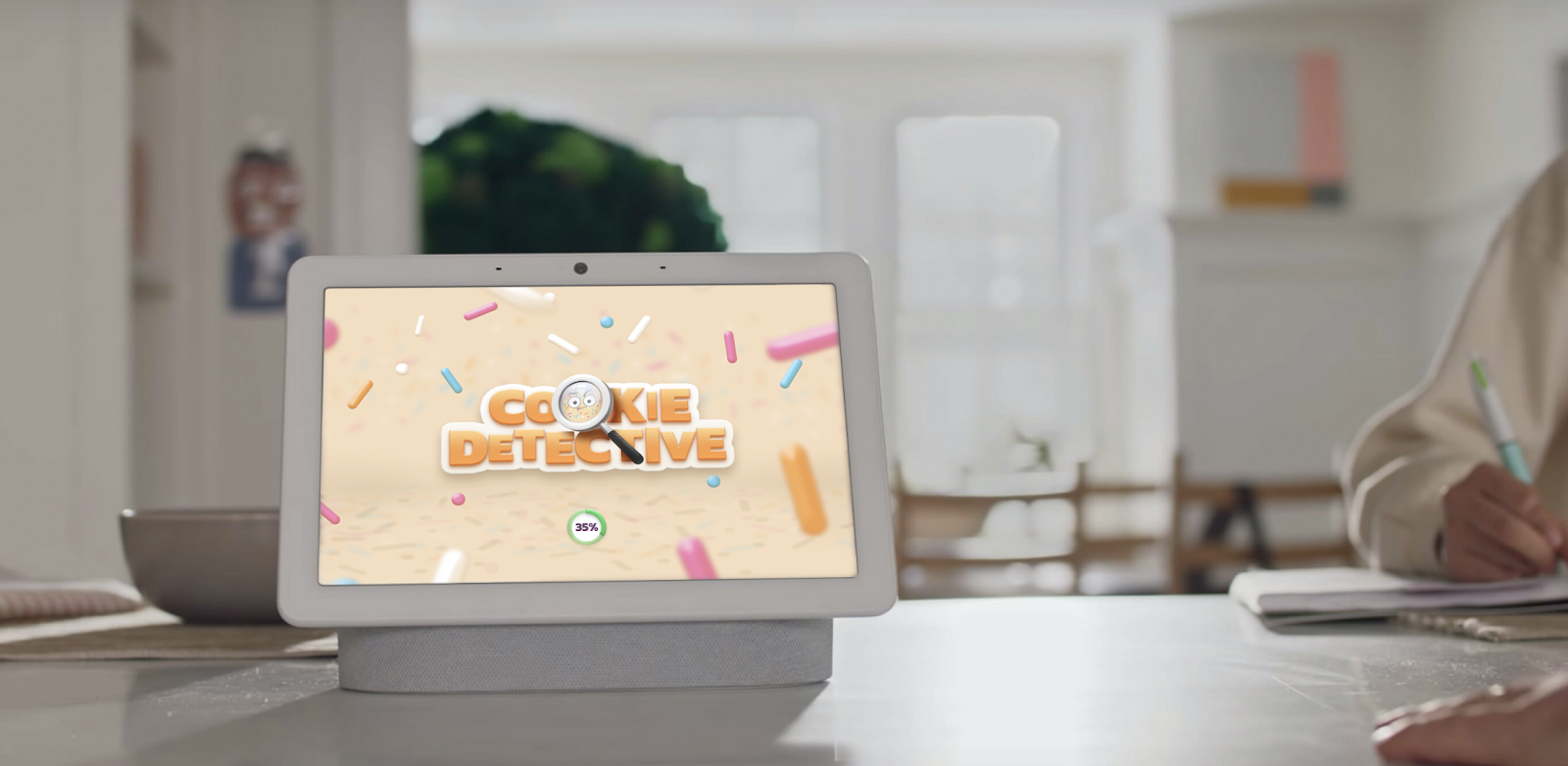
For years, we at MediaMonks have racked up high scores in developing games with our clients, dating back to the days of Flash. Today, we work across a breadth of platforms to create compelling games that push the limits of technology—and most recently, we’ve worked with Google to take voice gaming to the next level with two new games for smart displays.
Cookie Detective is an appetizing, voice-based take on hide-and-seek. It invites kids to ask ten questions to locate a hidden cookie within three virtual kitchens at varying difficulty. An upcoming game we’re working on is Junior Chef, which continues the culinary fun by challenging kids to instruct a team of chefs in their own restaurants.
Both games aim to encourage play-based learning (children learn about international ingredients in Junior Chef, for example). As an Easter egg, the game also welcome positive behaviors, such as speaking politely to the chefs.
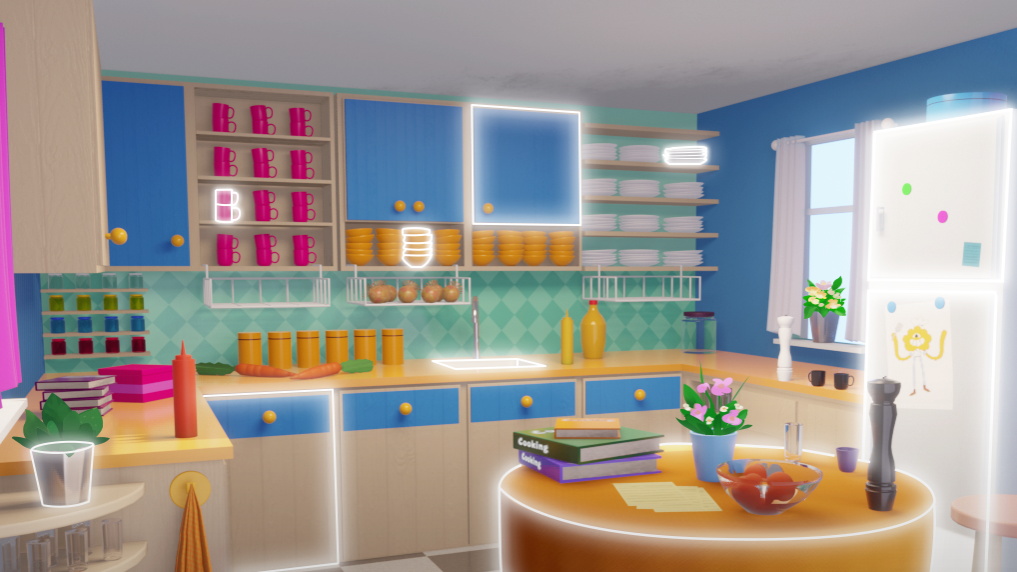
Cookie Detective invites players to locate a hidden cookie by asking a series of questions.
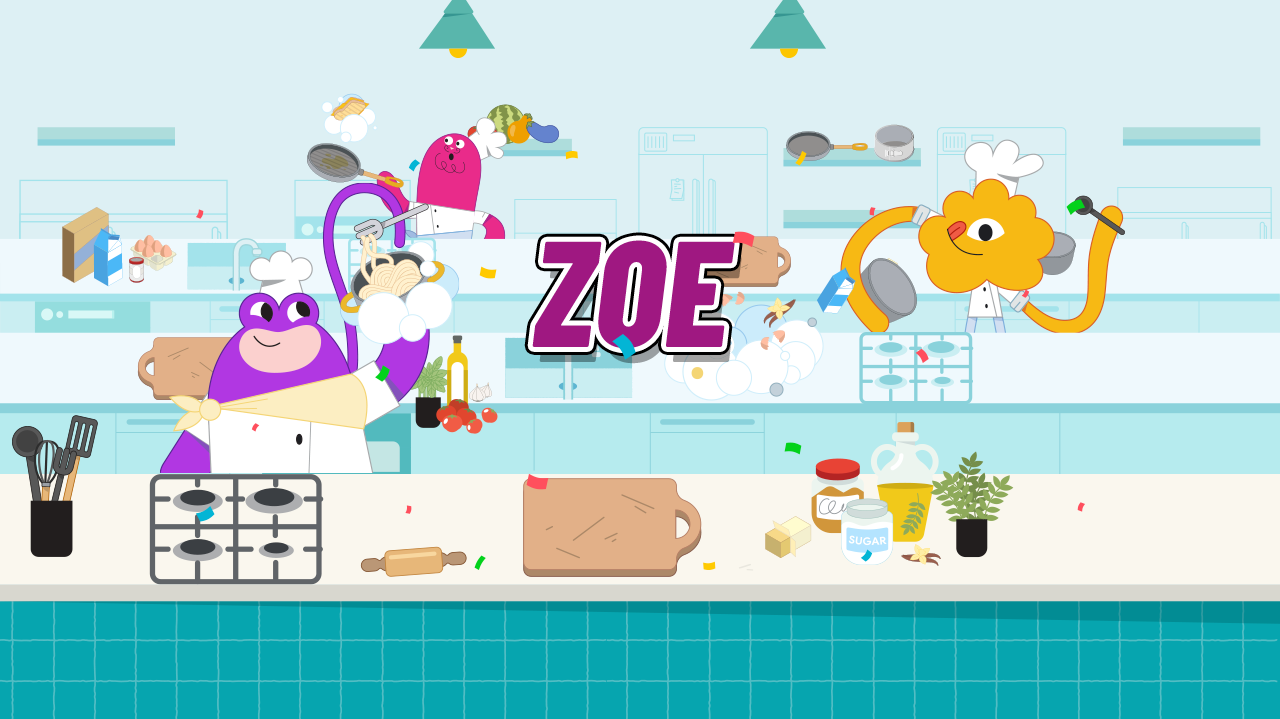
Junior Chef gives players the chance to direct a team of chefs in their own restaurant kitchen.
As the games were developed for the Google Nest Hub and Hub Max, we aimed to bring together the best of screen and voice-based interactivity. We relied on the Interactive Canvas framework to power-up even more possibilities for voice technology and the role it plays in the home.
What We’ve Learned
Look Ma, No Hands!
Historically, players have interacted with games using keyboards, mice, controllers and on screen buttons. While traditional controls are ingrained in the medium, voice offers a couple of new challenges: developers must account for a variety of variables like accents, context, subjects, phrasing and more. These interactions must be as accessible and intuitive as talking to another person.
Context is Crucial
Voice devices are often placed where the family gets together. We kept this in mind when developing our games, focusing on one of the most-trafficked places in the home: the kitchen. We chose activities natural to the kitchen (like cooking, learning recipes and looking for cookies) for the core ingredients of our two games.
Build on Previous Experience
Google offers several tools for building Actions, most notably Actions Builder, which lowers the barrier of entry by eliminating the need for technical development to create simple Actions. For our games, we combined the Actions SDK, the Actions on Google client library, the Interactive Canvas library and our solid background of web development to build a cohesive framework and robust architecture for building voice-enabled games.
We approached this project by combining our experience as voice developers with the wealth of knowledge in gaming that we’ve accumulated over the years—especially in mobile and web game development, which shares similarities with this platform. With Cookie Detective and Junior Chef, we aim to provide a benchmark for what’s possible, discover what works best, and learn how we can push boundaries even more in the future.
Let Characters Drive Stories & Interaction
Voice-based gaming offers an opportunity to deliver a rich story featuring characters with distinct personalities. While we made ample use of text and animations in our games, we relied on our characters’ voices to reveal their personalities and bring their stories to life. Expressions are not only fun, but functional: if a command isn’t clear in Cookie Detective, the cookie will respond based on the situation, for example the cookie could say, “I didn’t catch that, you can ask me something like, are you in the cookie jar?”
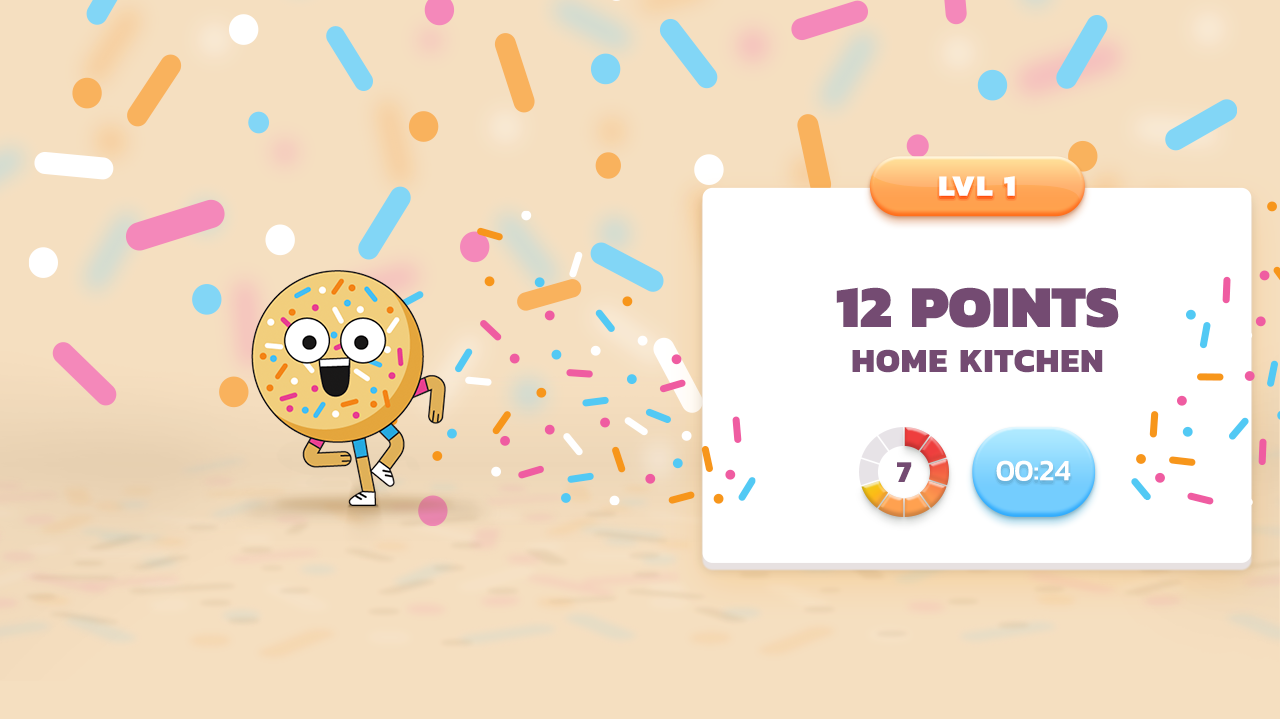
These responses can help immerse players into the game, though we found that it’s important to balance dialogue that serves characters’ personalities with lines that support gameplay. Deliver something playful the first time a player makes a particular action, followed by something short and concise for recurring interactions. So, when our cookie friend once again can’t understand what a player has said, he will still give a response that fits the situation, for example: “You can ask me something like, is it green?”
Keep it Fun – and Fluid
Keep in mind that a game made for the family should be about having fun, even when you lose. If players end up making a less-than-stellar meal in Junior Chef, for example, they’ll still take delight in watching how their guests react with exaggerated, funny faces. Whether it’s someone’s first time playing the game or their first time using voice, this eases pressure felt by the player and encourages them to come back and try again.
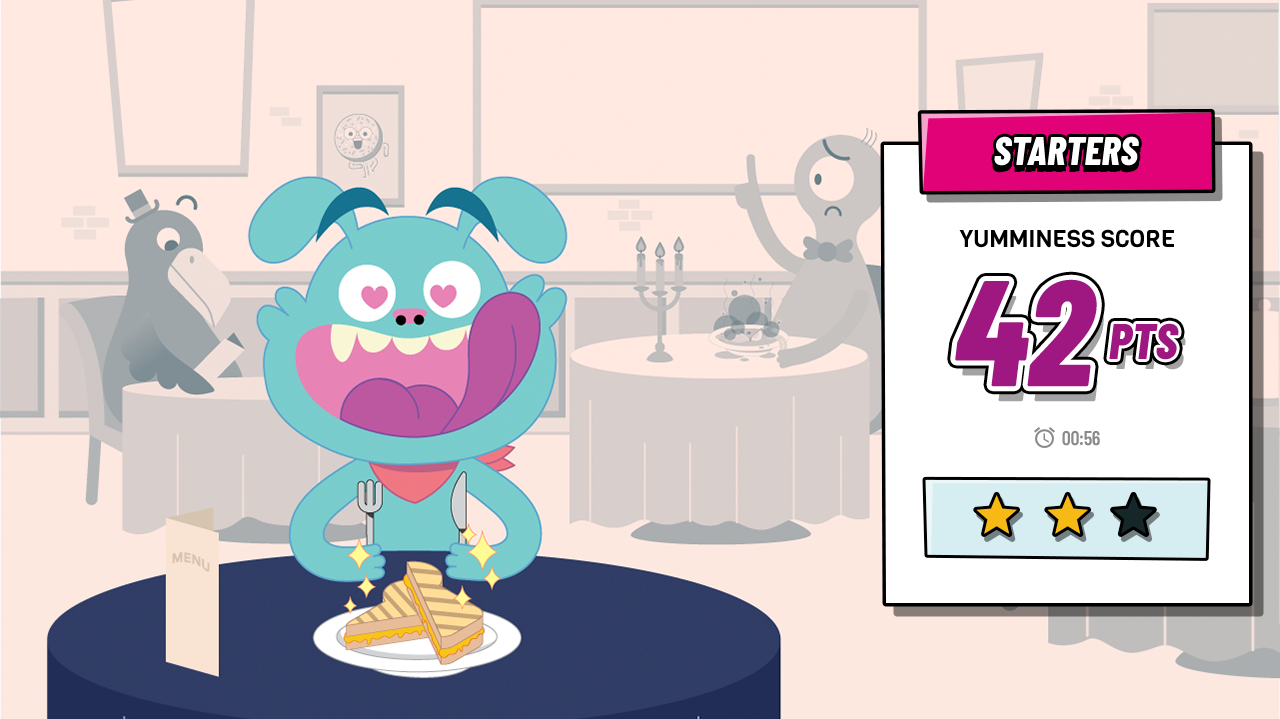
And when it comes to animation, we realize that smart displays aren’t trying to be in the same category as home gaming consoles. With performance and a casual audience in mind, stick to simple, colorful vector graphics and choose when to trigger animations wisely. We used Bodymovin for both games, which gave good results despite being a bit limiting.
Design Responsibly
When creating games for children, the potential for an emotional connection with the voice assistant is significant: studies have shown that interactions between kids and voice assistants reinforce patterns of behavior. We considered these responsibilities heavily, as well as others, including privacy and addictive screen habits, by designing each game to encourage polite offline social interactions.
Taking Voice to the Next Level
In addition to the learnings above that we’ve incorporated into the development of Cookie Detective and Junior Chef, we realize there are more opportunities to take voice-based gaming to the next level and increase user retention.
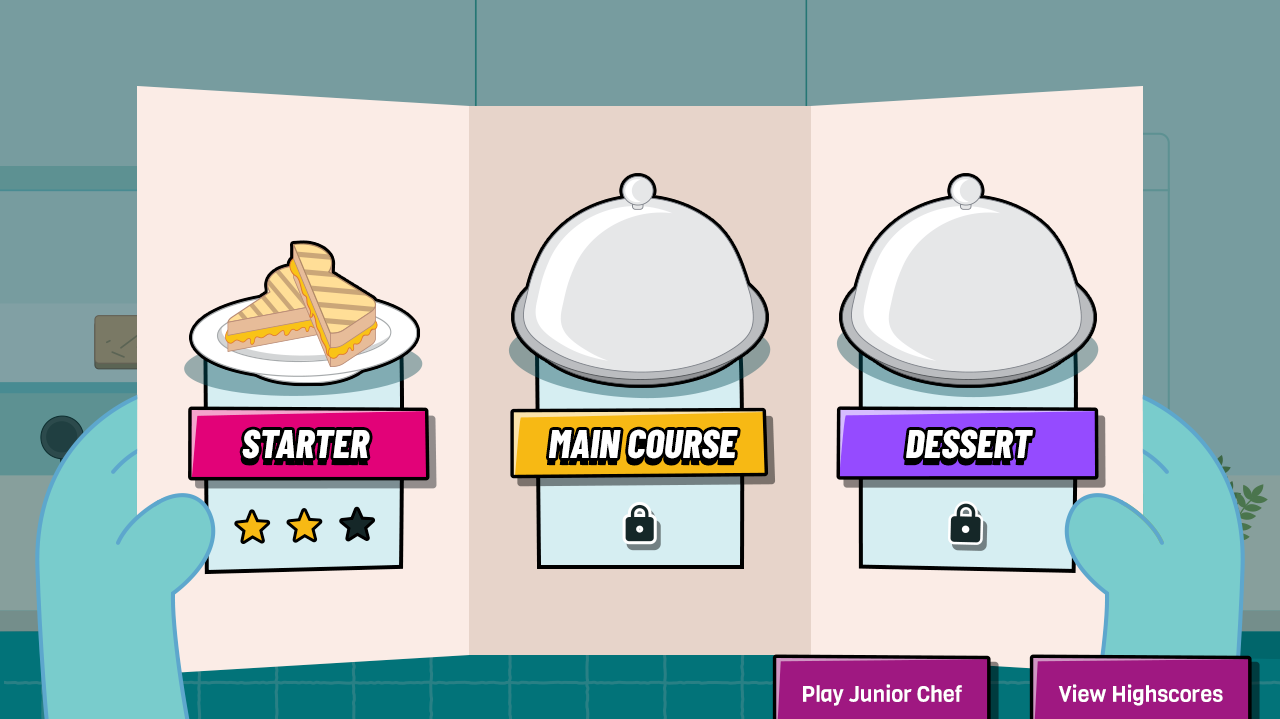
Game developers can keep users coming back by offering:
- Unlockable items that enhance gameplay and reward player progress
- Long-term support that adds new levels or expands the story
- Competitive elements, like daily challenges and time-based leaderboards
- Notifications that alert users to new content or a lost position on the leaderboard
- Improvements based on tracking user behavior
We love how this experience allowed us to bring new elements to gaming and recontextualize the role they play in the home. We also realize that we’re in the early days for these kinds of gaming experiences, and look forward to future possibilities like support for endless voices, supporting real time audio effects or cadence, richer voice processing, and even stronger AI.
One thing we’re sure about the state of voice gaming today is that the interaction between people and devices is more human than ever. Based on our experiments in building games for the Google Nest Hub devices, we believe Google Assistant will undoubtedly play a key role in driving more human-centered interaction and fulfilling the never-ending need for play.
Related
Thinking
Sharpen your edge in a world that won't wait
Sign up to get email updates with actionable insights, cutting-edge research and proven strategies.
Monks needs the contact information you provide to us to contact you about our products and services. You may unsubscribe from these communications at any time. For information on how to unsubscribe, as well as our privacy practices and commitment to protecting your privacy, please review our Privacy Policy.


